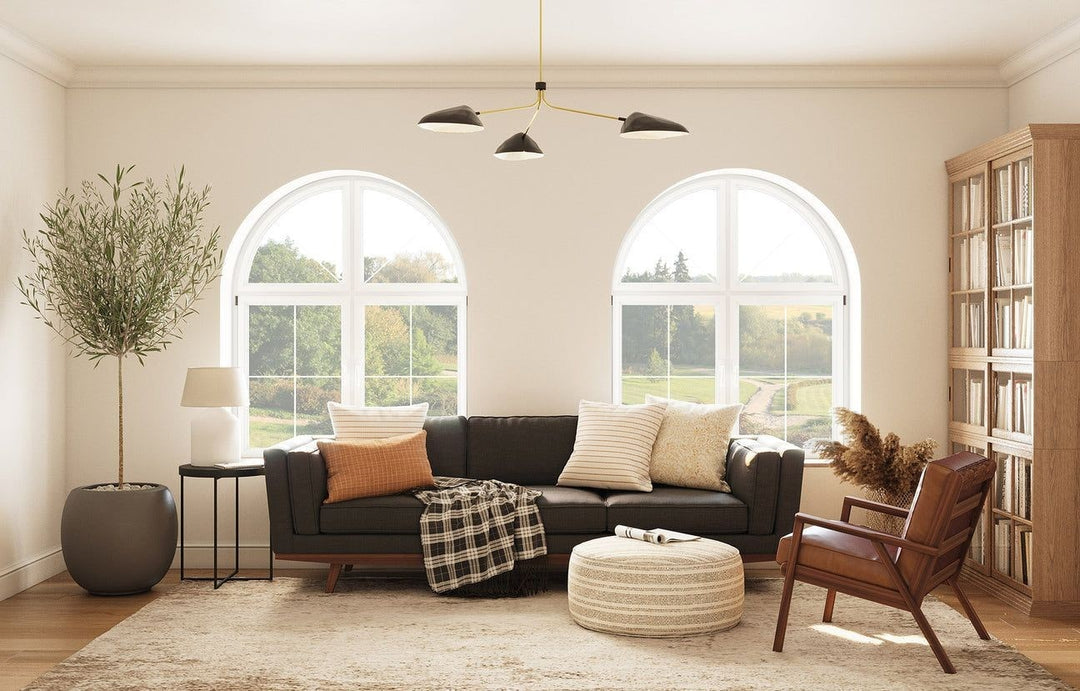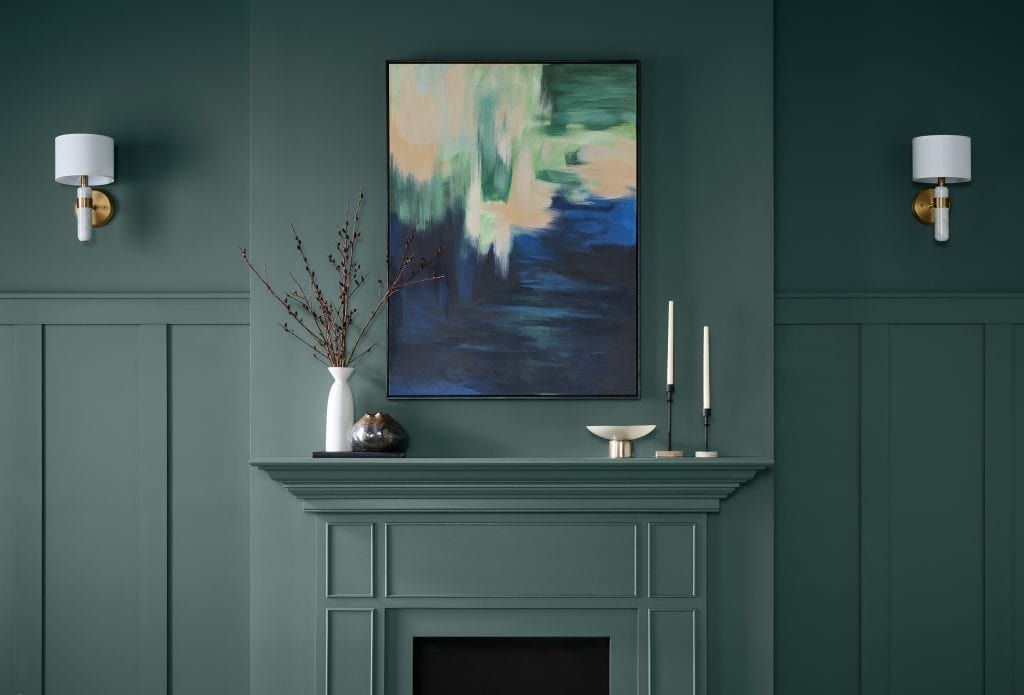Mixing Rustic and Classic Styles: A Beginner’s Guide
Creating a home that feels both comfortable and sophisticated can seem like a daunting task. You love the cosy, lived-in vibe of rustic décor, but you also appreciate the refined elegance of classic design. The good news? You don't have to choose! Mixing rustic and classic styles is a fantastic way to create a space that's uniquely yours – a space that tells a story, blending the old with the new, and the comfortable with the elegant.
This blog is your friendly guide to navigating the world of rustic and classic interior design. We'll break down the essential elements, offer practical tips, and inspire you with creative ideas for blending these two seemingly disparate styles into a harmonious and inviting home. Forget about usual interiors; it's time to embrace the beauty of contrast and create a space that truly reflects your personality!
We'll explore rustic traditional interior design elements, show you how to incorporate rustic vintage decor, and uncover the secrets to a perfect mix of farmhouse and classic style. Whether you're drawn to a subtle blend or a bolder approach to transitional rustic design, we're here to help you find the perfect balance. Get ready to discover the best furniture for rustic and classic interiors, learn tips for mixing rustic and classic home styles, and uncover countless cosy rustic chic ideas to transform your home into a haven of comfort and style.
Defining the Styles: What Makes Rustic "Rustic" and Classic "Classic"?
Before you start mixing, it's essential to understand the individual characteristics of each style:
Rustic Design
-
Key Elements: Natural materials, raw textures, and a strong connection to the outdoors. Think exposed wood beams, stone fireplaces, reclaimed wood furniture, and cosy textiles.
-
Colour Palette: Earthy and warm – browns, greens, creams, greys, and muted reds.
-
Textures: Rough and tactile – think exposed wood grain, stone, brick, burlap, and chunky knit fabrics.
-
Furniture: Solid wood pieces with visible imperfections, handcrafted details, and a focus on functionality. "Distressed wood furniture" is a signature element.
-
Accessories: Natural elements, such as antlers, woven baskets, vintage tools, and antique textiles.
-
Overall Vibe: Cosy, inviting, relaxed, and unpretentious.
Classic Design
-
Key Elements: Elegance, symmetry, refined details, and a sense of timelessness. Think ornate mouldings, polished surfaces, symmetrical layouts, and carefully curated collections.
-
Colour Palette: Sophisticated and often more saturated – neutrals, jewel tones (emerald green, sapphire blue, ruby red), and metallic accents.
-
Textures: Smooth and refined – think velvet, silk, polished wood, and crystal.
-
Furniture: Upholstered pieces with tufting and detailed carvings, elegant silhouettes, and a focus on comfort and sophistication.
-
Accessories: Art, antiques, decorative objects arranged with a sense of order and balance, and luxurious textiles.
-
Overall Vibe: Refined, sophisticated, timeless, and elegant.
The Magic of the Mix: Why Contrasting Styles Create Beautiful Harmony
The allure of blending rustic and classic elements lies in the captivating contrast they create. This combination offers a dynamic interplay between the raw and the refined, the comfortable and the elegant, and the old and the new. It's about creating a space that feels both grounded and elevated, relaxed and sophisticated.
Mixing styles also allows you to inject your unique personality into your home. It's an opportunity to showcase your unique taste, share your story, and create a space that truly reflects who you are.
Key Principles for a Successful Rustic-Classic Blend: Finding the Sweet Spot
Achieving a harmonious blend requires careful planning and attention to detail. Here are some essential principles to guide your design decisions:
-
Choose a Dominant Style
Start by selecting one style to serve as the foundation of your space. This will help you create a cohesive and intentional look. For example, opt for a predominantly classic living room with a neutral colour palette and elegant furniture, then layer in rustic touches for warmth and character. Alternatively, start with a rustic-inspired space and add classic elements to elevate the design.
-
Embrace Texture, Texture, Texture
Texture is your best friend when mixing styles! Juxtapose smooth, polished surfaces with rough, natural textures to create visual interest and depth. Consider pairing a velvet sofa with a wooden coffee table and styling it as you like, or a linen armchair with a stone fireplace.
-
Highlight the Imperfections
Rustic design celebrates imperfections, so don't be afraid to embrace the character of reclaimed materials, visible wood grain, and handcrafted details. These imperfections add authenticity and warmth to the space, preventing it from feeling too formal or sterile.
-
Balance is Key
Strive for a sense of balance between the two styles. Avoid overwhelming the space with too many rustic or classic elements. It's about finding a harmonious blend that feels both intentional and effortless. Let the textures and material contrast carry much of the work.
-
Scale Matters
Pay close attention to the scale of your furniture and accessories. Large, oversized pieces can overpower a small space, while delicate pieces can get lost in a large room. Select pieces that are proportionally sized for the space to create a sense of visual balance.
-
Unify with Colour
Use colour as a unifying element to tie the space together. Neutrals are always a safe bet, but don't be afraid to incorporate pops of colour to add visual interest and personality. Consider using a colour palette that draws inspiration from both rustic and classic aesthetics – for example, a combination of creams, greys, and muted greens with accents of jewel tones or metallics.
Accessorising with Intention: The Finishing Touches
Accessories are essential for creating a cohesive and inviting space.
Textiles: Layer different textures and patterns with throw cushions, blankets, and rugs. Think linen, velvet, wool, faux fur, and chunky knits.
Lighting: Incorporate a mix of lighting sources, including ambient, task, and accent lighting. Consider using a combination of classic-style chandeliers and rustic-style wall sconces or table lamps.
Artwork: Choose artwork that reflects your personal taste and complements the overall style of the room. Consider mixing classic portraits with more contemporary abstract pieces.
Accessories: Display collections of vintage objects, natural elements, or handcrafted items. Think antique books, vintage maps, woven baskets, and pottery.
Greenery: Add plants and flowers to bring life and energy to the space. Consider using a combination of classic-style urns and rustic-style planters.
Common Mistakes to Avoid: A Word of Caution
While mixing rustic and classic styles can be incredibly rewarding, it's important to avoid common pitfalls that can lead to a disjointed or overwhelming look:
Excessive use of a single style, whether rustic or classic, can disrupt the room's harmony.
Furniture that doesn't match the size of the space, either too big or too small, can cause imbalance. An ill-chosen colour palette may make the room feel disconnected and uncoordinated. To create a cohesive look, ensure there's a unifying element, such as colour, texture, or theme, that ties the space together.
Start Your Design Journey Today!
Mixing rustic and classic styles is an exciting and rewarding way to create a home that's both beautiful and uniquely you. By understanding the core elements of each style, following these practical tips, and adding your own personal touches, you can create a space that's both comfortable and sophisticated – a true reflection of your individual taste. Don't be afraid to experiment, have fun, and embrace the beauty of contrast! Your dream home awaits! Visit Hudson Furniture for more interior inspiration.
FAQs
- I love the idea of distressed wood furniture, but I worry it will look too "shabby" in my classic-leaning home. How can I incorporate it tastefully without sacrificing elegance?
The key is choosing distressed wood pieces with subtle distressing and refined silhouettes. Look for pieces where the distressing enhances the wood's natural grain and character rather than appearing overly worn or damaged.
- I'm drawn to the "farmhouse and classic style mix," but I don't actually live on a farm! How can I capture that vibe without it feeling contrived or cliché?
Get natural materials like linen, cotton, and wood, but choose pieces with clean lines and understated details. Focus on the core principles of farmhouse style, warmth, simplicity, and connection to nature, rather than literal interpretations.
- I have a very small budget, but I still want to achieve a sophisticated mix of rustic and classic styles. What are some affordable ways to achieve this look?
Start with a few key pieces that define the overall style of the room, a classic-style sofa or a distressed wood coffee table, for example. Then, fill in the gaps with affordable accessories and DIY projects.
- I'm worried about the "transitional rustic design" trend fading quickly. How can I create a space that feels both stylish and timeless?
Choose furniture with clean lines and timeless silhouettes, and opt for neutral colours that are easy to update. Focus on incorporating classic design elements that will stand the test of time, rather than relying on fleeting trends.
- I have pets and kids, so I need furniture that is both stylish and durable. Are there specific materials or finishes that are particularly well-suited for mixing rustic and classic styles in a high-traffic home?
Look for furniture made from durable materials like solid wood, and performance fabrics that are stain-resistant and easy to clean. Choose finishes that are scratch-resistant and moisture-resistant.




